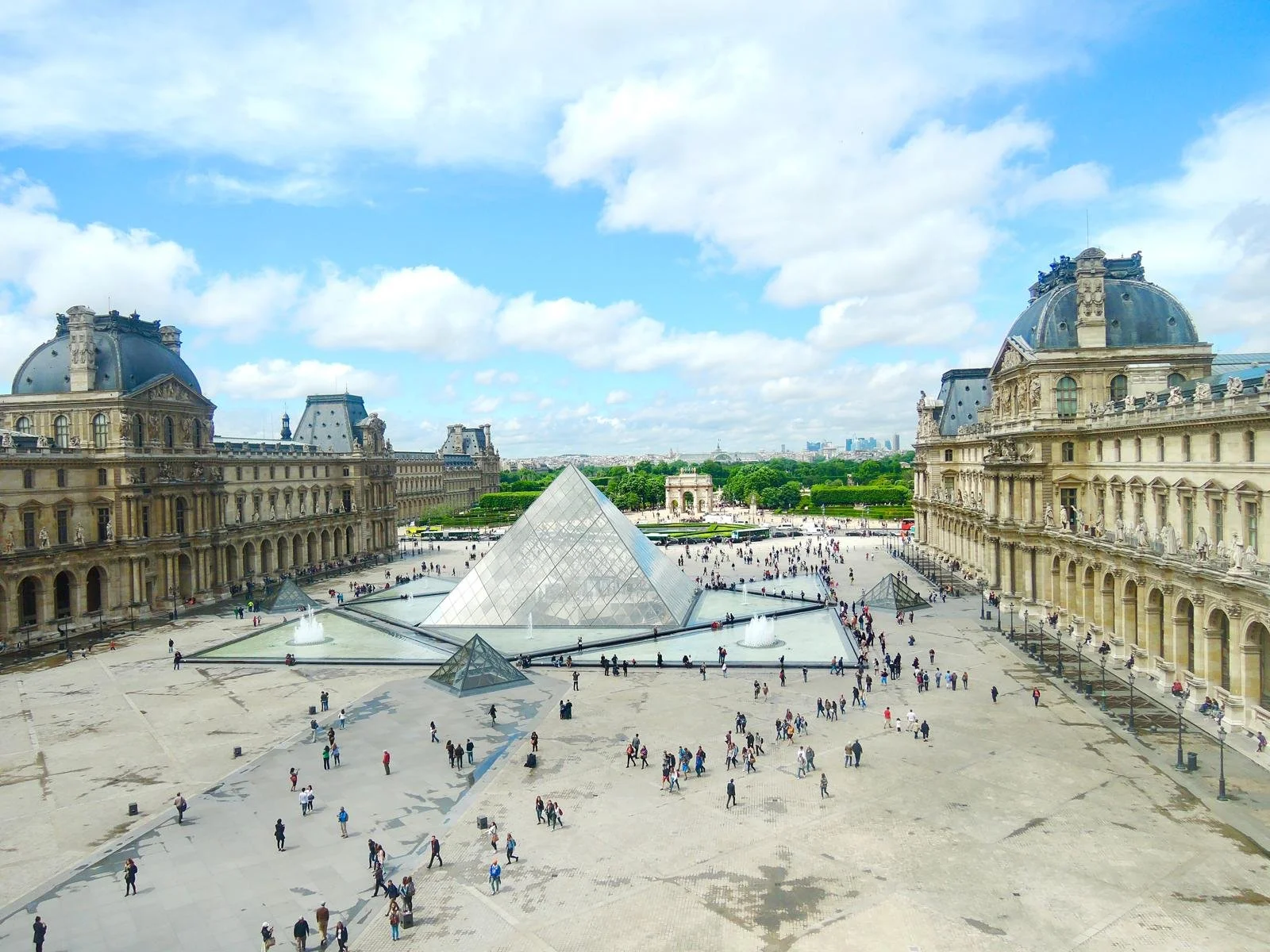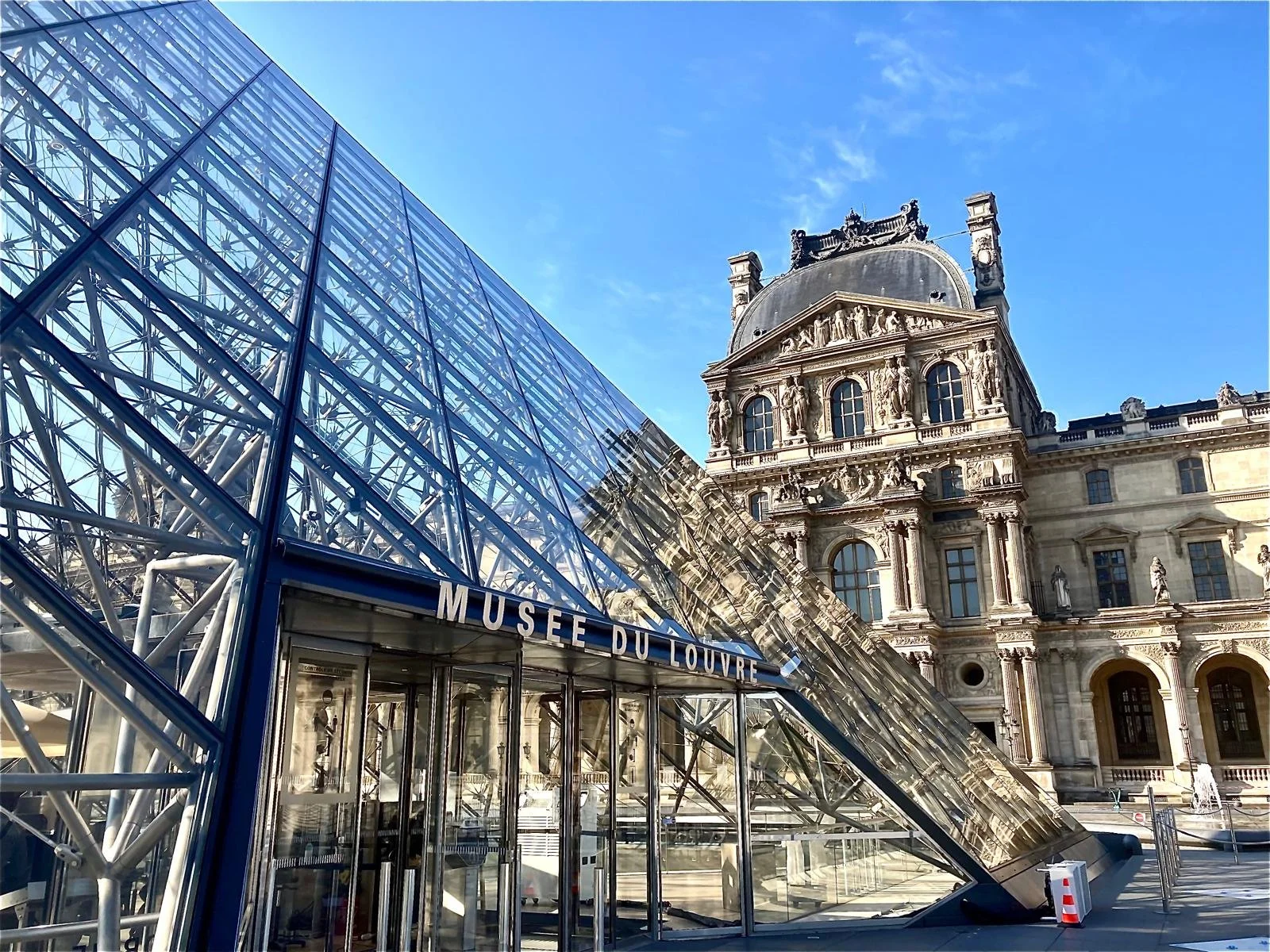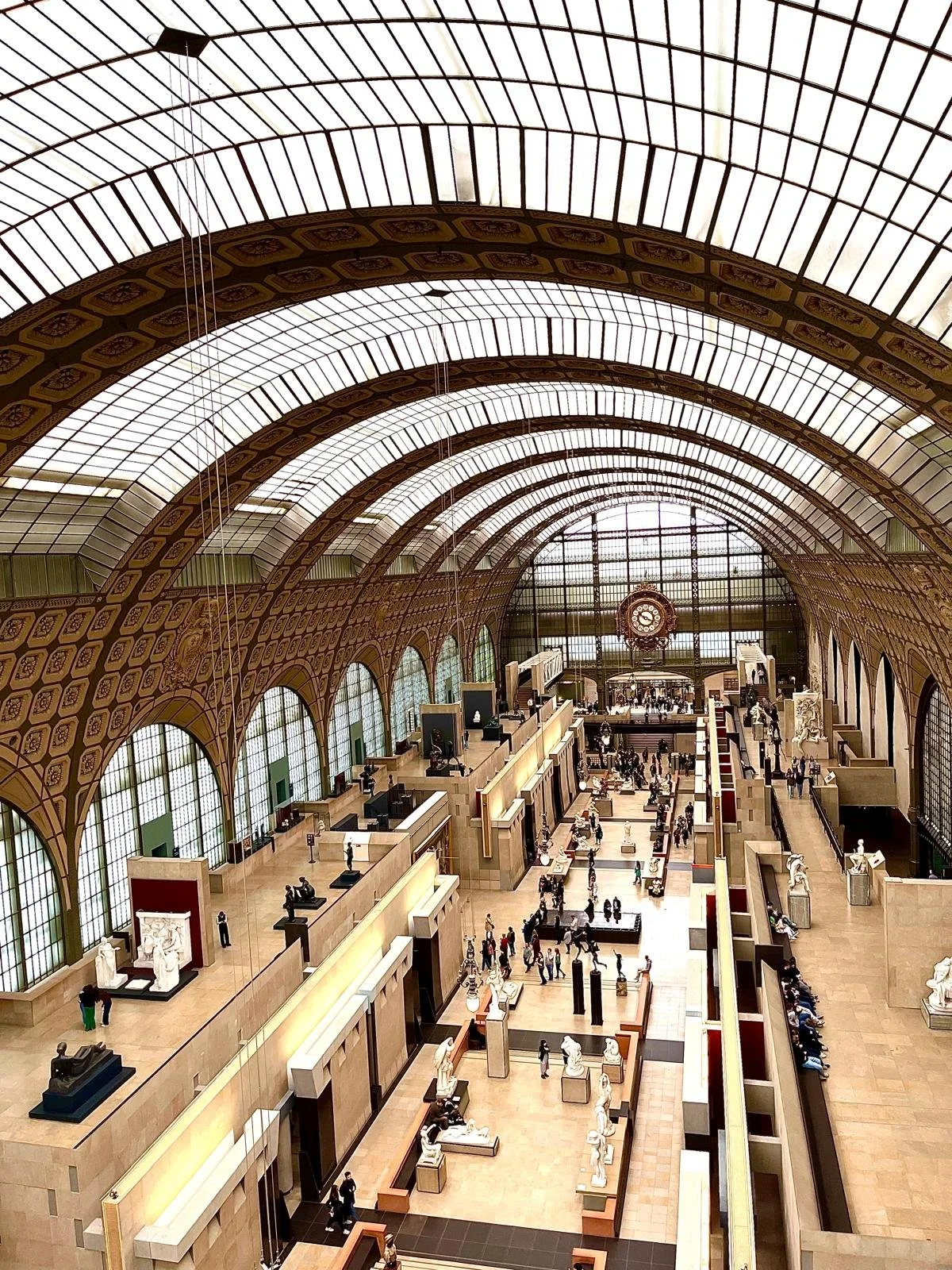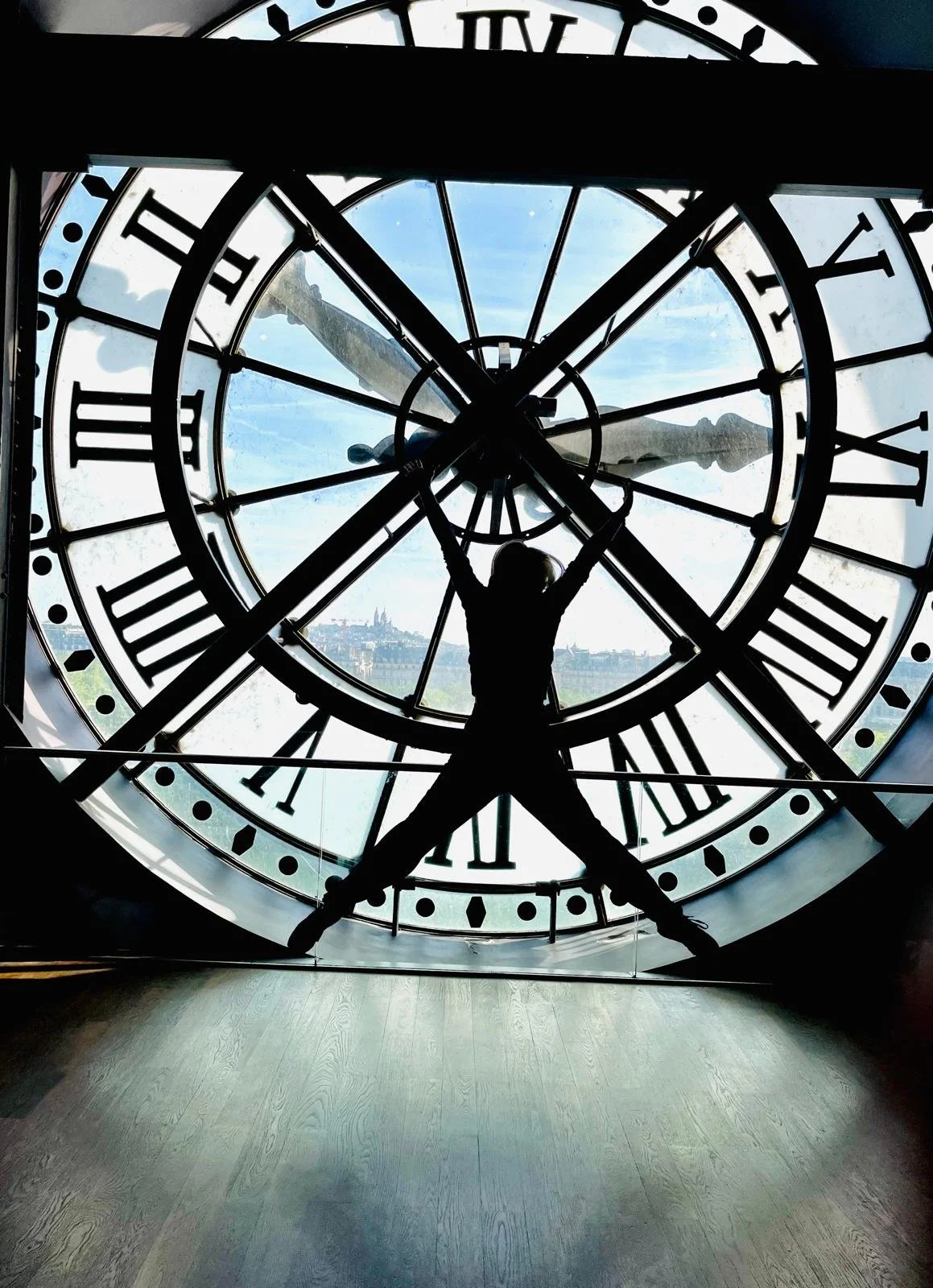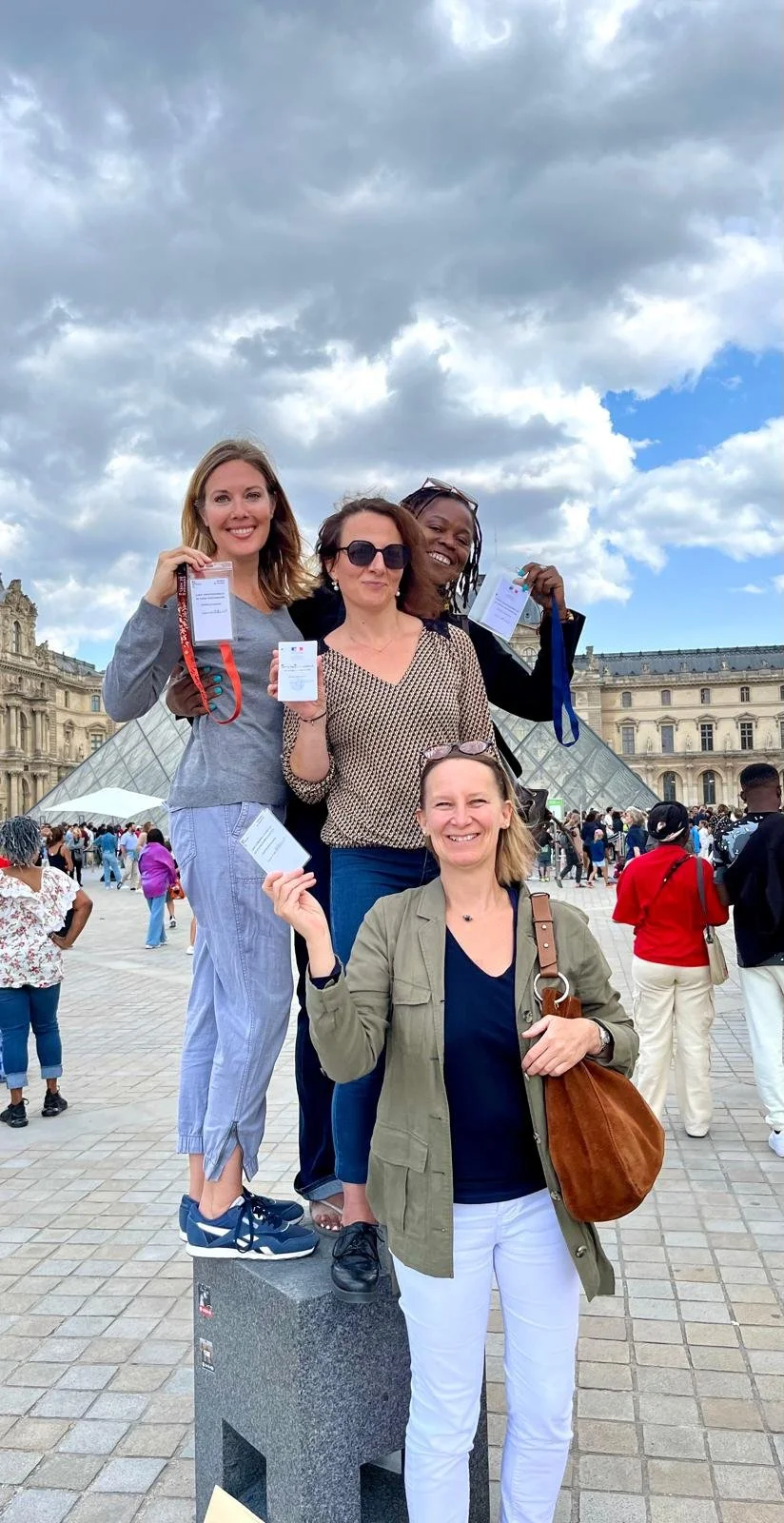The Big Three Paris Museums
In my work as a Paris tour guide, I’ve found that the best way for a 1st-time visitor to experience Paris’s art scene is to approach it with a clear strategy. The question I’m asked most often is, "What museums should I really not miss?" The answer, of course, depends on your personal interests. But for a comprehensive and unforgettable overview of Western art, this is my go-to.
I recommend you see what I call Paris's "Big Three." It’s a term that holds a special meaning for me, a native Detroiter who grew up with a different kind of "Big 3." But here in Paris, this refers to the three cultural giants whose collections, when viewed together, tell a beautiful, continuous story: the Louvre, the Musée d'Orsay, and the Centre Pompidou. They represent an arc through art history, from ancient civilizations to the wild experimentation of the modern age. I always recommend seeing them in that order.
However, there is an important detail you need to know: The Centre Pompidou is closing its doors for a massive five-year renovation in fall 2025, so this particular "Big Three" tour is an experience you need to have now, before it's gone.
Here’s why you should prioritize this journey through art history.
1. The Louvre: Ancient to 1848
The Louvre is the world’s most visited museum, and for good reason. Its collection is a staggering journey through nearly 9,000 years of human history, from the ancient wonders of Mesopotamia and Pharaonic Egypt to the grand canvases of the 19th century. To fully appreciate it, one must remember that the building itself is a former royal palace—a physical testament to the power of the French monarchy that was first transformed into a public museum during the French Revolution. The most visible modern addition is the iconic glass pyramid by I.M. Pei, which brilliantly serves as a central hub for navigating the museum's immense galleries.
My Not-to-Miss Recommendations:
The Mona Lisa by Leonardo da Vinci: Yes, it's smaller than you imagine, and yes, there will be a crowd. But standing before Leonardo's revolutionary sfumato technique and her famous enigmatic smile is a truly magnetic experience.
The Wedding at Cana by Veronese: Positioned directly across from the Mona Lisa, this monumental, vibrant canvas is a masterclass in Renaissance storytelling and a perfect example of the Louvre's breathtaking scale.
The Winged Victory of Samothrace: Poised dramatically at the top of the Daru staircase, this Hellenistic masterpiece of the goddess Nike feels as if she has just alighted from the heavens, with her garments still billowing in the wind.
The Venus de Milo: With her lost arms, this masterpiece of Greek sculpture from the Hellenistic period invites you to complete her form with your imagination, a testament to the enduring power of classic beauty.
Liberty Leading the People by Eugène Delacroix: An iconic symbol of revolution, this painting captures the raw energy and patriotic spirit of the July Revolution of 1830, with a powerful allegorical figure of Liberty at its heart.
The Seated Scribe: This remarkably lifelike statue from the Old Kingdom of Egypt is a highlight of the Louvre’s vast antiquities collection, with eyes that seem to follow you, filled with intelligence and personality.
Practical Tips:
Closed Tuesdays.
Open late on Wednesdays and Fridays (until 9:45 pm), which is a fantastic time to visit as the crowds are much thinner and the galleries are magical at night.
Closest Metro: Palais-Royal / Musée du Louvre (Lines 1 and 7).
Official website for tickets: https://www.louvre.fr/en
2. Musée d’Orsay: 1848–1914
Just a short walk across the Seine from the Louvre, the Musée d’Orsay provides a seamless transition from classical to modern art. The museum itself is a marvel of architecture, housed in the former Gare d'Orsay, a magnificent Beaux-Arts train station built for the 1900 Exposition Universelle. It was saved from demolition and transformed into the museum we know today, with its grand, arched halls filled with light. The collections pick up precisely where the Louvre's leave off, focusing on the radical artistic changes from 1848 to 1914. This is where you will finally find the celebrated Impressionist and Post-Impressionist masterpieces you might have mistakenly sought at the Louvre.
Highlights from the Collection:
Starry Night Over the Rhône by Vincent van Gogh: This is the museum’s famous Van Gogh, alive with his characteristic swirling energy and dazzling color.
Olympia and Le Déjeuner sur l’herbe by Édouard Manet: These two scandalous paintings of modern life broke from academic tradition, shocking the art world and paving the way for a new form of realism.
The Ballet Class and L'Étoile by Edgar Degas: Degas’s fascination with dancers and his innovative compositions, which often framed his subjects as if in a photograph, offer an intimate glimpse into 19th-century Parisian life.
The Gleaners by Jean-François Millet: This powerful work of Realism brings dignity to the harsh realities of rural poverty, a subject that would have been unthinkable in the academic art of the time.
Water Lilies and the Rouen Cathedral series by Claude Monet: These masterpieces showcase Monet’s obsession with capturing the fleeting effects of light and atmosphere, turning mundane subjects into brilliant studies of color and impression.
Practical Tips:
Closed Mondays.
Don't miss the monumental station clock on the top floor, which now serves as a giant window offering a panoramic view of the Seine and the Louvre. It's an atmospheric café and a great spot for a photo.
Closest Metro: Solférino (Line 12) or RER C: Musée d’Orsay.
Average visit: 2–3 hours.
Official website for tickets: https://www.musee-orsay.fr/en
3. Centre Pompidou: 20th Century & Beyond (See it before it closes!)
The Centre Pompidou is where the story of art becomes truly revolutionary. Designed by Renzo Piano and Richard Rogers, the building itself is a work of art, with its famous "inside-out" architecture. When it opened in 1977, it caused a sensation, with its color-coded pipes, escalators, and ducts all on the exterior. Today, it stands as a bold landmark of high-tech architecture and a symbol of France's embrace of the avant-garde.
Crucial Update for Travelers: The Centre Pompidou is set to close its doors for a five-year renovation, with a full reopening planned for 2030. This means that a visit to the Pompidou in 2025 is your last chance to experience the full collection in its original home for a very long time. This is a rare opportunity to witness an institution at the end of an era, and I strongly encourage you to prioritize it. The museum collection will be the final part of the building to close to the public.
Inside, the collection traces the major movements of the 20th century, from the birth of Fauvism and Cubism to the intellectual challenges of Dada and Surrealism. This is a place for discovery, where you can find the groundbreaking works of artists like Léger, Kandinsky, and Matisse alongside the American influence of Abstract Expressionism and Pop Art. It’s an exhilarating space that challenges you to think differently about what art can be.
Key Artists Represented:
Fernand Léger (Les Noces): A masterpiece of French modernism, this work presents a dynamic and stylized vision of machines and figures, capturing the energy of the machine age.
Henri Matisse (The Sorrows of the King): A vibrant and joyous work created with paper cutouts that showcases the artist’s mastery of color and composition in his final years.
Wassily Kandinsky (Yellow-Red-Blue): An essential piece of early abstract art, where color and line are used to evoke emotion and feeling, completely free from representation.
Jackson Pollock (Number 26A): A visceral, large-scale example of Abstract Expressionism, where the energy of the artist's action is captured on the canvas.
Frida Kahlo (The Frame): This striking self-portrait, a masterful blend of Mexican folk art and Surrealism, is a highlight of the museum’s collection of Latin American art.
Practical Tips:
Closed Tuesdays.
The museum also offers one of the best panoramic views of Paris from its rooftop terrace. My pro-tip: go in the late afternoon, explore the collection, and then have a drink upstairs to watch the sunset over the city.
Closest Metro: Rambuteau (Line 11) or Hôtel de Ville (Line 1).
Official website for tickets: https://www.centrepompidou.fr/en/
Plus- there are always musicians playing ouside and a lively ambiance!
Practical Tips:
Closed Tuesdays.
The museum also offers one of the best panoramic views of Paris from its rooftop terrace. My pro-tip: go in the late afternoon, explore the collection, and then have a drink upstairs to watch the sunset over the city.
Closest Metro: Rambuteau (Line 11) or Hôtel de Ville (Line 1).
Each of these three museums tells a different, crucial part of the story of Western art. For first-time visitors to Paris, seeing them in order provides not just a cultural overview, but a real sense of the continuity and change that has defined the last millennia of human creativity. Whether your tastes run to ancient sculpture, Impressionist color, or conceptual installations, Paris has a museum that will feel made for you. And for a limited time, you have the chance to see the complete story before one of its most important chapters closes for five years.
Always book a Licensed Tour Guide! (guide conférencier in French) You can find one at: https://fngic.fr/en


